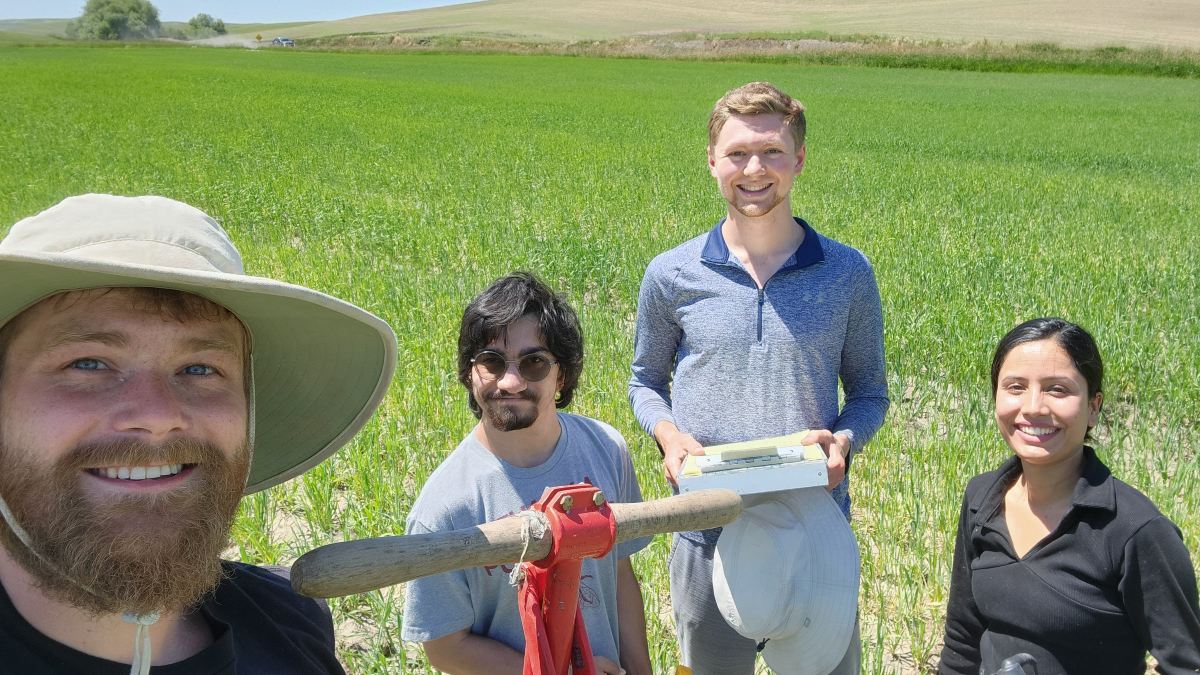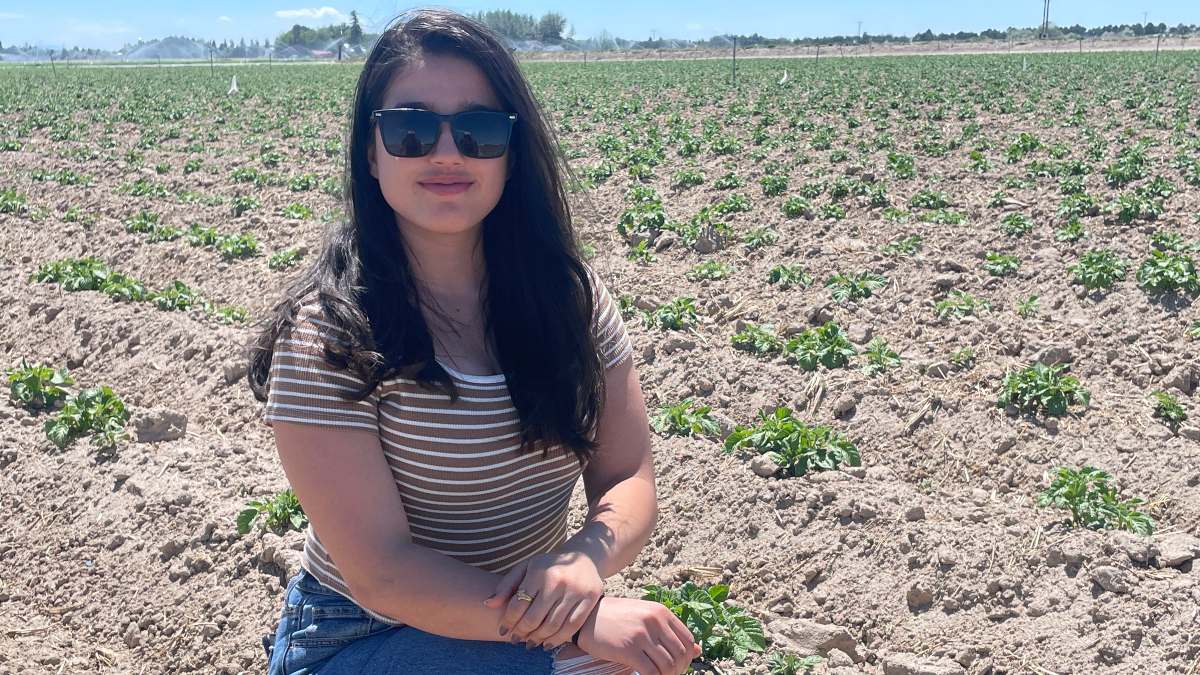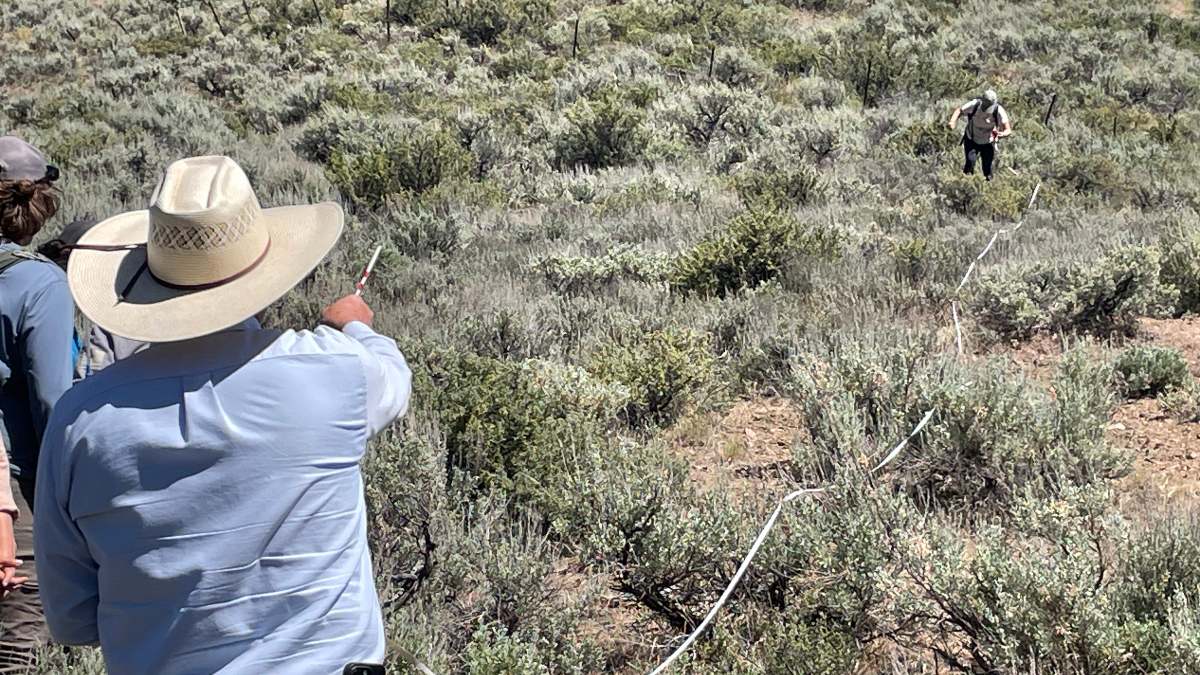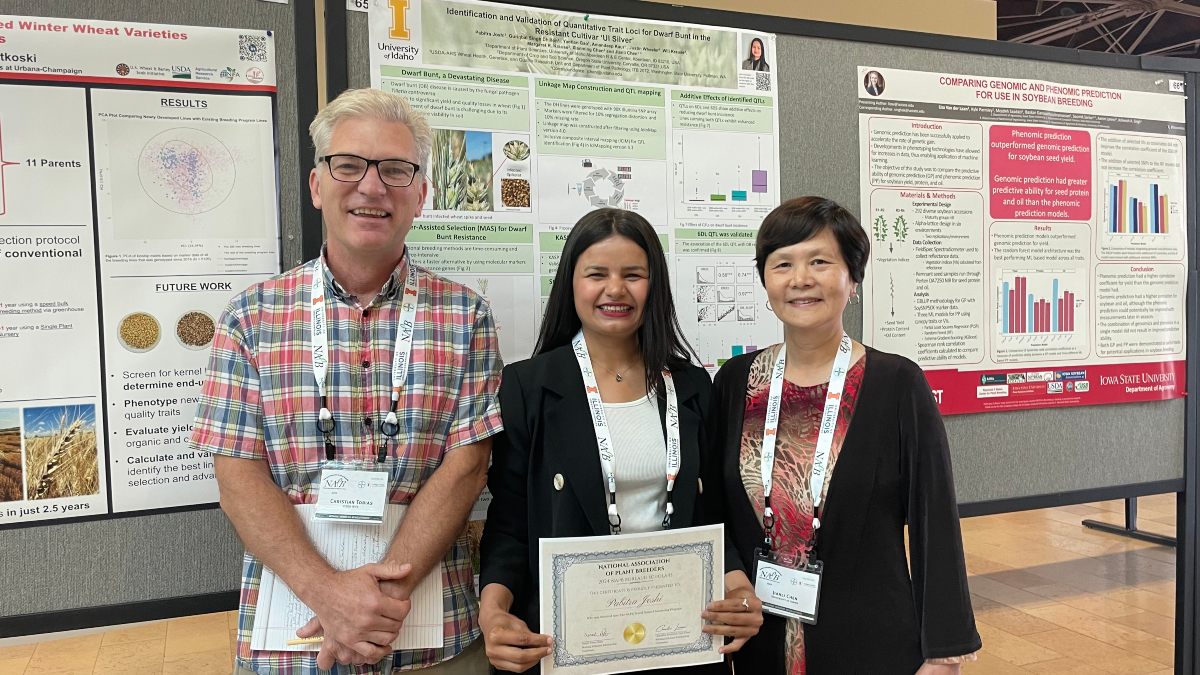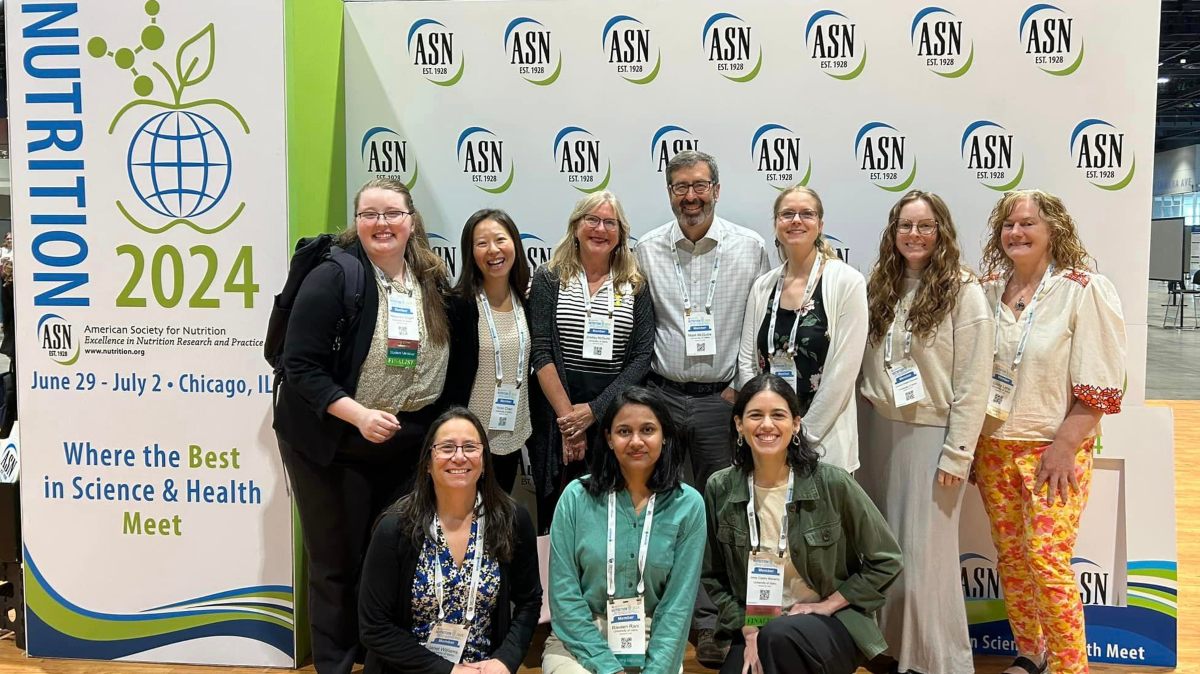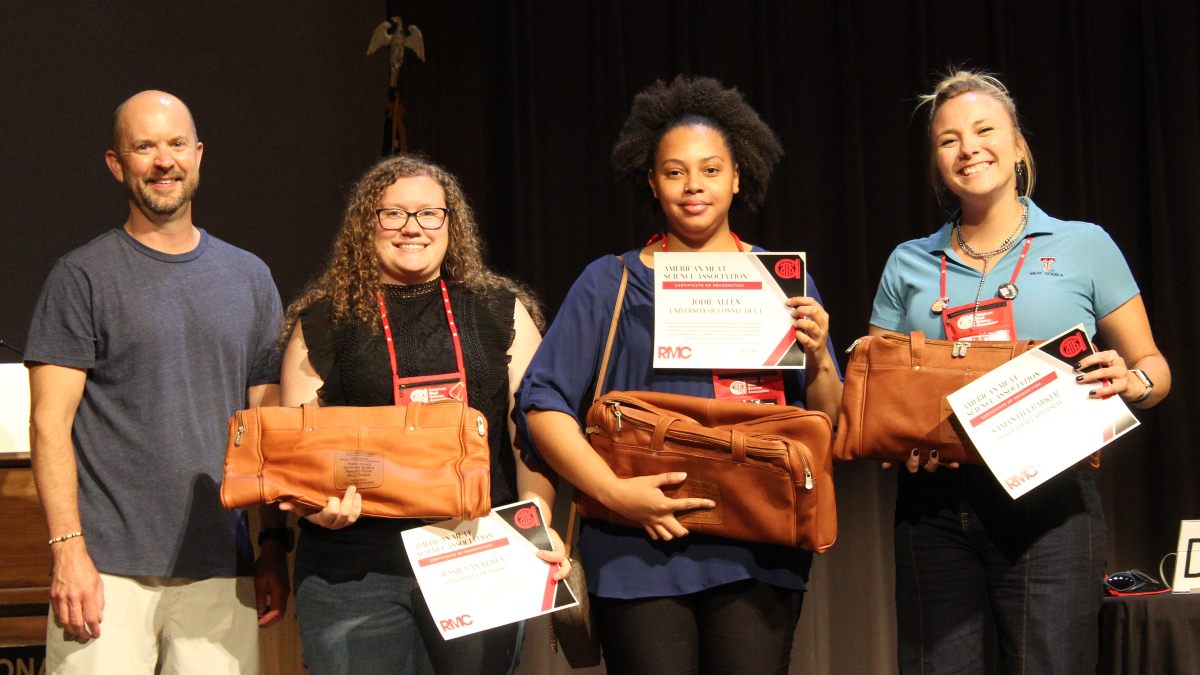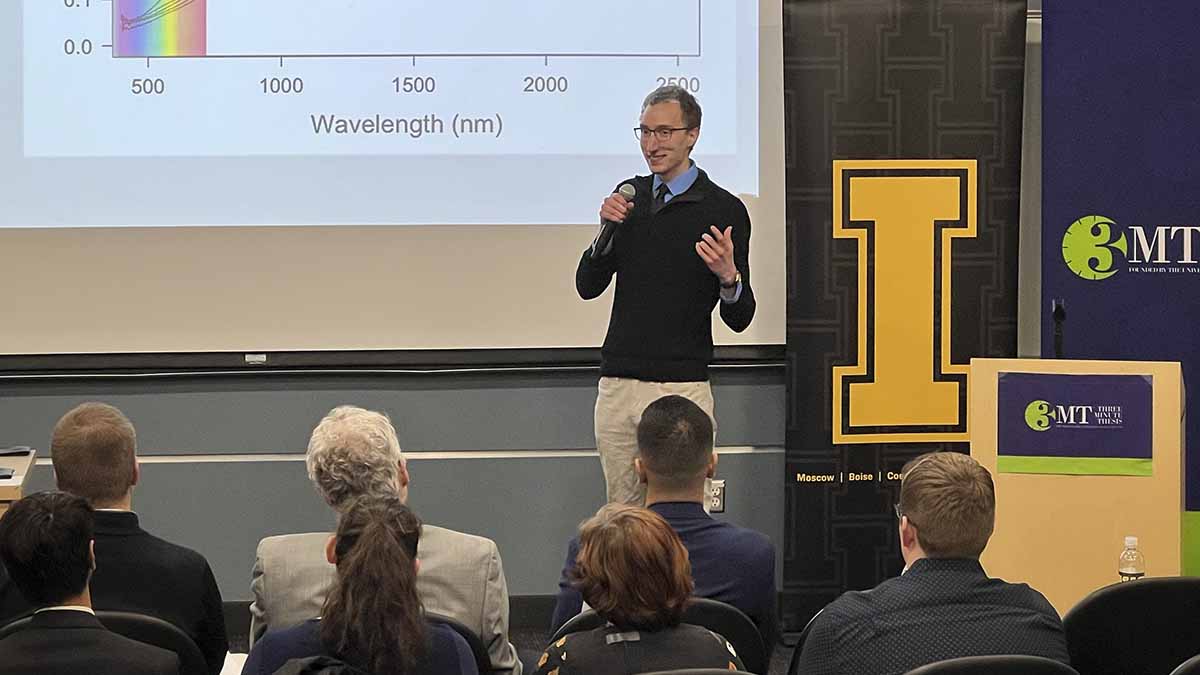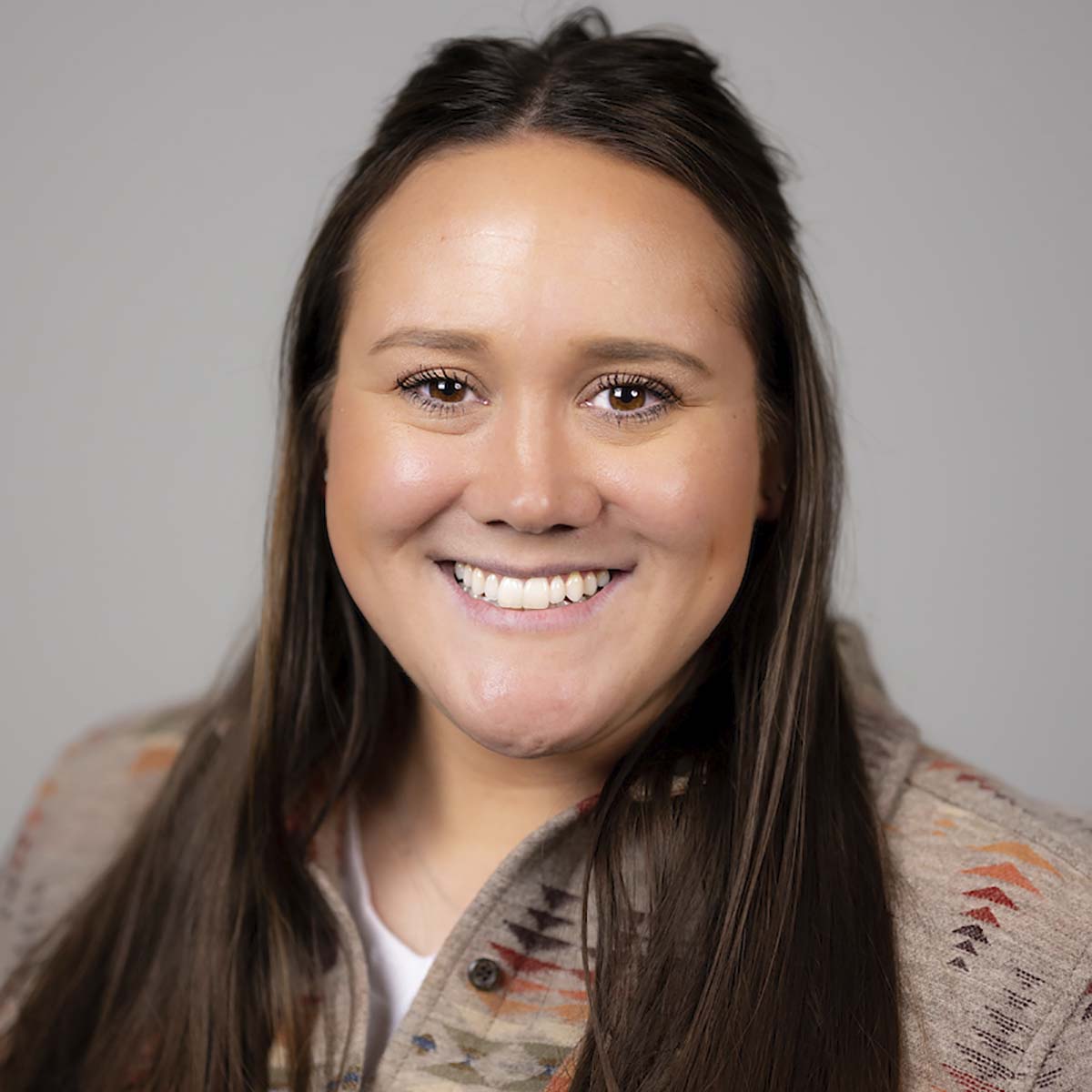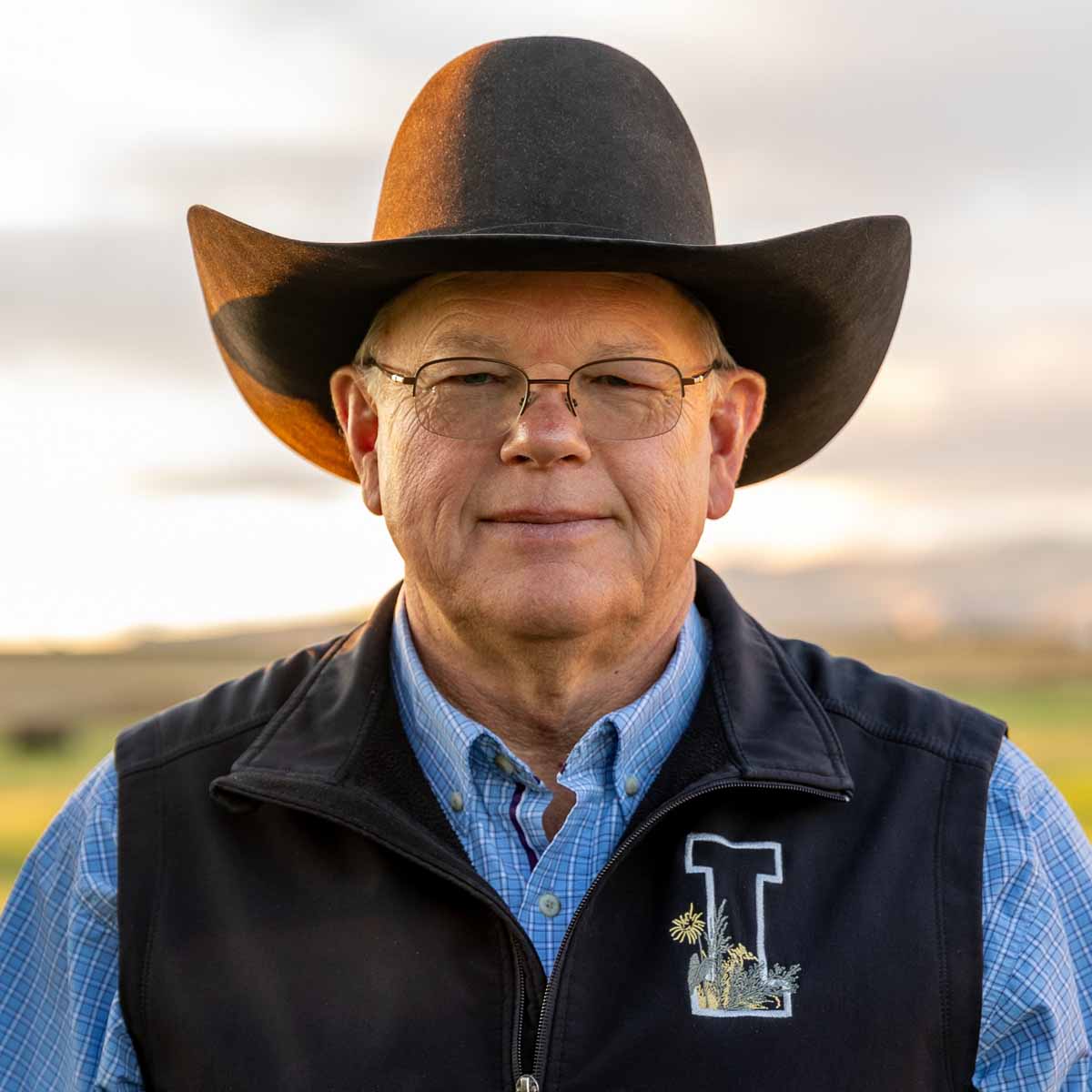Catching Up with CALS — July 24, 2024
Dean's Message — Sharing What We Do
While attending the recent Twilight Tour at the University of Idaho Aberdeen Research and Extension Center, a local boy approached the facility’s operation’s manager, Chad Jackson, for guidance on his UI Extension 4-H Youth Development project. Jackson came through, to say the least. The boy’s 4-H project pertains to the potato variety Teton Russet, and Jackson introduced him to members of the U of I and U.S. Department of Agriculture’s Agricultural Research Service (USDA-ARS) collaborative potato breeding program responsible for developing and releasing the variety.
Aside from a hiatus amid the COVID-19 pandemic, the Twilight Tour has been hosted every other year in Aberdeen since 2007. The tour’s aim is to educate area residents about the phenomenal research that’s occurring in their own backyard, thereby making the farms that drive Idaho’s rural economies more profitable and sustainable. Along with booths featuring our own research projects, we invite partner agencies and organizations – such as the Idaho Barley Commission, the Idaho Department of Fish and Game, the USDA-ARS, the USDA Natural Resources Conservation Service Plant Materials Center and the Southern Bingham County Soil and Water Conservation District – to showcase their scientific endeavors at Twilight Tours. We serve a free barbeque meal, host live music, offer games for all ages and give wagon rides throughout the facility, drawing a crowd of 250 to 450 people. Furthermore, Lamb Weston brings its popular fry truck to the event, which Sen. Julie VanOrden, R-Pingree, referenced as a prime example of a public and private partnership to the Legislature’s Joint Finance-Appropriations Committee in 2023. Twilight Tours were also formerly hosted at the U of I Kimberly Research and Extension Center.
Twilight Tour guests receive a passport, which they can get stamped at the various booths, where they learn about a broad diversity of agricultural research and extension. Leslee Blanch, an Extension educator specializing in family and consumer sciences, gave away fruit and offered a lesson in nutrition. Pamela Hutchinson, a potato cropping systems weed scientist, made a pickled salad from a common, edible weed. Cookies made with Idaho wheat were served for dessert, and researchers with U of I’s wheat breeding program showcased some of the high-yielding new varieties they’ve developed, which are being raised throughout the northwest. U of I’s Aquaculture Research Institute shared details of its efforts to breed trout that can thrive on feed made with agriculture products rather than fish meal, which comes from the ocean and isn’t a sustainable resource. Xi Liang, a UI Extension cropping systems agronomist, shared information about a $55 million USDA grant CALS researchers received incentivizing growers to implement climate-smart agricultural practices, known as the Innovative Agriculture and Marketing Partnership (IAMP).
“There are a lot of amazing things that happen here, and people go, ‘Wow! I never had any idea this was possible and that it happens in southeast Idaho, and in Aberdeen of all places,” Jackson said. “This is one way to reach out and explain some things and educate people. They are the taxpayers and they are helping fund this research.”
Indeed, research at our Aberdeen facility has transformed Idaho agriculture. About 25 years ago, more than 80% of potatoes planted in the state were of one variety – Russet Burbank. Russet Burbank acres have declined by more than half, and varieties released from the U of I and USDA-ARS joint breeding program in Aberdeen are replacing them. Winter malt barley varieties released cooperatively by U of I and USDA-ARS in Aberdeen have resulted in phenomenal yield increases in Idaho’s Magic Valley. Our Aberdeen-based wheat breeder, Jianli Chen, has released a promising high-yielding and top-quality new hard white spring wheat variety, UI Gold.
It's no secret that people are becoming increasingly detached from the farms, ranches and dairies that produce the food they eat. Jackson recalled how a group of school children who once visited the station answered, “The grocery store,” when he asked them where their food comes from. When he asked them where grocery stores get their food, the children responded, “Another grocery store.” In the absence of good information, consumers buy into baseless claims made by opponents of agriculture, including that conventionally raised crops aren’t safe to eat and that crops bred with biotechnology are dangerous “Frankenfoods.” In truth, our nation’s food supply is the world’s safest, and biotechnology has enabled us to reduce our reliance on pesticides and become better stewards of our natural environment. It’s critical that our college and university take a lead role in setting the record straight, and the Twilight Tour has proven to be a fun and effective way to meet that challenge.

Michael P. Parrella
Dean
College of Agricultural and Life Sciences
By the Numbers
Families in southern and eastern Idaho were invited to the Twilight Tour, hosted July 17 at the University of Idaho Aberdeen Research and Extension Center. The event, which is hosted every 2 years in Aberdeen, began in 2007 to share the great research occurring at the facility with the public. Organizers served enough barbecue, potato salad and other side dishes to serve 450 guests. Furthermore, 608 cookies made with Idaho wheat were served for dessert. Visitors were given passports to stamp at 19 booths devoted to research and science. Leslee Blanch, a UI Extension educator specializing in family and consumer sciences, Bonneville County, tallied 196 guests who stopped by her Sugar Shockers booth. Visitors had a chance to win any of 50 door prizes. U of I received help from 6 other agencies and organizations in hosting the event. Participants also competed in games. For example, 9 men and 8 women competed in a strongman competition, during which they had to hold a 50-pound bag of wheat over their head for as long as possible.
Our Stories

Soilborne Crop Helpers
University of Idaho researchers studying farm fields in the Palouse region have unearthed strong evidence that increasing diversity in agricultural systems benefits soil arthropod communities, which in turn improve crop productivity.
Through their research, Dane Elmquist, who recently graduated from the University of Idaho with a doctorate in entomology, and his major professor, University Distinguished Professor Sanford Eigenbrode, provided baseline data of soil arthropod communities inhabiting Palouse farmland, as well as how farming practices influence those communities. The data will allow researchers to monitor changes in Palouse soil arthropod populations over time and guide work aimed to improve overall health of agricultural soils.
Arthropods are invertebrates with jointed legs and bodies with a hard exoskeleton. About 23% of all described organisms live in soil, and 85% of those are arthropods. Examples of soilborne arthropods include mites, springtails, centipedes, ants, spiders, beetles and pill bugs.
“These soil arthropods are kind of a neglected piece of the puzzle. They’ve received a lot less research attention compared with their microbial counterparts in the soil, as well as earthworms,” said Elmquist, who earned his doctorate last December and is now working for University of Wisconsin-Madison Extension. “We really didn’t know much, if anything, about the soil arthropod communities of the Palouse agricultural ecosystems prior to our project.”
Soil arthropods are critical to soil health as they decompose crop residue, thereby releasing nutrients that support crop growth. They also interact closely with important soil microbial communities and help control soilborne pests.
Elmquist based his dissertation on the research. His project includes five chapters – three have been published in scientific journals and one chapter is under review for publication. He and Eigenbrode have also published an Extension bulletin on their work through U of I.
The soil arthropod work was funded by three grants. It was part of the multidisciplinary, $4.1 million Landscapes in Transition (LIT) project, which was funded by USDA and assessed how diversification of agricultural practices in the Palouse impacted the entire farming system. Elmquist also obtained a $120,000 USDA National Institute of Food and Agriculture predoctoral grant covering associated greenhouse work and a $25,000 USDA Western SARE graduate student grant.
From 2018-2022, researchers planted on-farm strip trials and small plots to compare arthropod populations in conventional crop rotations with more diversified rotations — including winter pea in place of a legume or a fallow period, single-species cover crops and multi-species spring cover crops. The diversified rotations, especially the addition of winter peas and multi-species cover crops, resulted in a far richer diversity of soil arthropods
“We did find an effect of above-ground diversity on below-ground diversity,” Elmquist said, adding the greater diversity of soil arthropods persisted into later planted winter wheat.
Furthermore, they confirmed an increase in arthropod-mediated litter decomposition in wheat plots that followed multi-species cover crops.
Through their combined studies, they evaluated more than 950 soil samples for arthropods, counting more than 120,000 individual arthropods and identifying more than 70 arthropod taxa.
“I was surprised by the number and diversity of the arthropods we pulled from these agricultural ecosystems that have been farmed relatively intensively for the last 100 years,” Elmquist said.
Elmquist extracted arthropods from soil samples taken from experimental plots using a tool known as a Berlese-Tullgren funnel. A light bulb heats and dries the soil, forcing the arthropods further away until they fall from the mouth of a funnel into a preservative. Elmquist also modified the funnel to capture them alive for use in greenhouse experiments.
After counting the arthropods and recording their family, Elmquist added them to soil in pots to grow wheat plants in a greenhouse. He discovered the presence of arthropods had a profound effect on strengthening wheat root systems and increasing above-ground plant biomass.
“The roots were generally longer, there were more of them and they had more tips and branches, which are important for nutrient scavenging,” Elmquist said, adding soil arthropods also increased the plant biomass above ground.
The researchers also noticed in their greenhouse research that when aphids were placed on plants, populations of arthropods in the soil became more robust. Conversely, arthropods in the soil correlated with more aphids on foliage.
More research is needed to understand the mechanisms behind the correlation between soil arthropods and insects feeding above ground, as well as the improved plant root development triggered by soil arthropods.
Eigenbrode and Elmquist collaborated with U of I’s former head of the Department of Soil and Water Systems, Jodi Johnson-Maynard, to compare using the presence of soil arthropods as an indicator of soil health against more traditional methods of assessing soil health. They see great promise in the approach, which warrants additional research.
“Soil arthropods affect the growth and potential profitability of wheat production in our region, and this is why producers should become aware of this work,” Eigenbrode said. “Take care of your below-ground livestock. That’s part of taking care of your whole production system, and we’ve provided some data that underscores that it’s not just handwaving. It’s real.”

Potato Seed Research
A University of Idaho graduate student aims to shed light on U.S. potato farmers’ tolerance levels of certain economically impactful diseases affecting potato seed and whether their preferences align with seed certification program standards.
Pragati Dahal, from Nepal, will study the issue for her master’s thesis in applied economics, working under advisor Chris McIntosh, head of the Department of Agricultural Economics and Rural Sociology (AERS). Professor Jason Winfree and Associate Professor Alexander Maas, who are also in AERS, are assisting in the research.
For her work, Dahal has been awarded the Joe and Terri Guenthner Graduate Scholarship, honoring the career of Joe Guenthner who conducted research on behalf of the potato industry for more than 33 years as a professor of agricultural economics at U of I. The $1,779 scholarship is awarded annually to a full-time graduate student enrolled in the College of Agricultural and Life Sciences who wishes to pursue a career in the potato industry.
Dahal believes her project could help reduce wasted potato seed while providing more options for potato farmers during seed shortages.
“The tolerance levels for potato certification have been assigned, but we are not sure whether the commercial growers would use the potato tubers with disease percentage higher than the assigned tolerance levels” Dahal said. “If we better understood farmers’ preferences for seed potato quality, we would have a much clearer understanding of the seed potato market.”
The U of I research team will develop a survey to distribute at events attracting large numbers of potato growers, such as Potato Expo 2025, scheduled for next January in Orlando, Florida, and the 57th Annual Idaho Potato Conference, scheduled for next January in Pocatello. They also aim to recruit growers to participate via potato industry trade magazines. The survey will key in on major diseases affecting potato seed growers across the country, including potato virus Y (PVY).
In Idaho, any potato seed sold must meet the standards of the Idaho Crop Improvement Association (ICIA), which is the agent designated by the Regents of the University of Idaho as the state’s seed certifying agency. Commercial growers who meet certain guidelines may also opt to replant their own seed. On average, 1.05% of seed acres entered for ICIA certification were rejected during field inspection from 2008 through 2023.
When PVY exceeds 1%, ICIA prohibits seed growers from recertifying seed – which entails replanting it to produce additional seed and exponentially increases any disease in the lot. Idaho has no restrictions on the percentage of PVY that commercial potato growers may plant, though some states, such as Wisconsin and Michigan, restrict commercial growers from planting seed with more than 5% PVY.
“Everyone assumes that commercial growers don’t care up to about 10% PVY, but nobody has actually measured that,” McIntosh said. “We can inform these certification systems.”
Dahal was previously involved in a project modeling potential economic losses based on the percentage of PVY in a seed lot compared with clean seed. Her team concluded that a low percentage of PVY had very low effect on revenue, though potato variety also played an important role.
American Falls potato farmer Klaren Koompin, who raised both commercial and seed potatoes, agrees that variety is an extremely important consideration when assessing an acceptable level of PVY in seed, as well as the specific strain of PVY. For example, Koompin has planted Umatilla Russet seed with upwards of 15% of the N-Wilga PVY strain and sustained virtually no losses in his commercial crop. He’s also sustained major losses from far less PVY with combinations of other strains and varieties. Koompin advises farmers who have a seed lot that tests high for PVY to take it to ICIA to test the strain.
“I’d like to see more research done on what varieties are subject to what strains,” Koompin said.
Alan Westra, ICIA’s area manager, has found supply and demand also shape growers’ perceptions regarding acceptable disease thresholds in potato seed.
“Two springs ago when seed was short, there wasn’t enough to go around, and there wasn’t much discussion about virus,” Westra said. “This year there’s too much seed, and commercial growers are asking about disease ratings because they can pick and choose.”

Research Cowboys
Campfire conversations are a melding of ranch life and scientific research at University of Idaho’s Rinker Rock Creek Ranch in the Wood River Valley.
Banjo, a horse who throws temper tantrums like a toddler who missed a nap, is tough to manage but always good for a story. And a bold weasel they call Diesel is fast becoming the unofficial mascot of Cow Camp — the more rustic of the ranch’s two living areas. Trapping and ear-tagging rodents, songbird counts in riparian areas and the use of beaver dams by brooding sage grouse hens are also fodder for discussions.
Rinker Rock Creek Ranch is a unique rangeland research and outreach facility comprising 22,000 acres — including 10,400 acres of deeded land under U of I’s control — managed in partnership by the university, the Nature Conservancy and the Wood River Land Trust, with input from stakeholders who serve on an advisory board. Researchers from the College of Agricultural and Life Sciences and the College of Natural Resources use the ranch as a living laboratory for studying rangeland health.
During most summers since research began at the ranch in 2016, between 20 and 30 people have gathered over three days in June for a data monitoring blitz, during which they record data from throughout the uplands about the types of vegetation that are present. The blitz provides a long-term record of how the landscape is responding to factors such as experimental treatments, a changing climate and invasive species.
“We decided we needed good science to drive management, and that meant getting the data,” said Karen Launchbaugh, a professor of rangeland ecology. “We want to see if the whole landscape changes and track it. We also want to get people out here to experience the ranch, both the science side and the social side.”
The blitz has become an eagerly anticipated social event that draws an eclectic group of participants — including U of I graduate students, summer ranch-hand interns, faculty, stakeholders and partners representing several organizations — to a remote and scenic setting.
Those who spend a summer as seasonal interns at Cow Camp — or come for just a few days to partake in the monitoring blitz — find wildlife, picturesque sunsets and starry nights more than offset what they miss in power, running water and cell service.
By day, ranch hands tend to their herd while blitz participants head for the hills with clipboards and tape measures. Prior to the first blitz, plots were randomly selected throughout the ranch to monitor. Blitz volunteers visit a third of the plots every summer to set up transects — straight lines through the landscape along which plant species and vegetation measurements are documented at regular intervals, with accompanying photographs.
“We can see what happens when we have a hot, dry summer versus a cold, wet spring, and we can see how the vegetation responds to that each year,” explained Tim Prather, a professor in the Department of Plant Sciences and associate director of the Rangeland Center. “We’ve had instances where we’ve had a lot of different plant species — sometimes over 70. This year with it being both cool and dry, we did not see as many of our wildflower species.”
Launchbaugh provides volunteers with their reward for a hard day’s work — her famous Dutch oven cooking. From smoky prime rib and cobbler to loaded breakfast casseroles, Launchbaugh serves feasts that provide a welcome respite for Cow Camp residents accustomed to dining upon dry goods, in the absence of refrigeration. Launchbaugh sometimes contributes to the evening’s entertainment, strumming original songs with western themes, such as the lonely life of a Basque sheepherder.
Building good memories for her crew is as important to Launchbaugh as collecting sound scientific data.
“These interns we have now, they are working for other organizations and they’re building relationships and learning about this land,” Launchbaugh said. “This will be part of their memory. Someday they’ll come here with their kids and they’re going to say, ‘Once I was part of this blitz.’”
Matt Mikelson, of Parma, discovered his invitation to spend a summer as a cowboy intern while perusing a job board at the College of Southern Idaho, where he’s studying animal science. He’s fixed a lot of fencing this summer and is especially proud of the corrals he welded. He’s gotten to toss a lasso a few times, but his days are mostly spent distributing salt mixtures and minerals for livestock and otherwise “making sure the cows are good and happy.”
“I like the remoteness of Cow Camp. It’s pretty cool. I like the outdoor shower,” Mikelson said, drawing laughs from his peers. “The wall tents are pretty cool. They can either get to like 20 degrees or 103 degrees. It just depends.”
Some of the student researchers begin their days well before sunrise. For example, Annie Vaage, a U of I undergraduate from Orofino studying wildlife resources, wakes at 4 a.m. each morning to listen for songbirds at selected points along Rock Creek, recording the species she confirms at each location. Her hypothesis is that species diversity will be greatest near beaver dams and manmade structures that mimic them, known as beaver dam analogs.
Harrison Eckard-Garrett, of Des Moines, Iowa, is a field technician working on a small mammal research project with U of I master’s student Kirby Lau, of Hillsborough, North Carolina. The two leave Cow Camp before sunrise to affix rodents they capture in hundreds of traps with tiny ear tags. Ear-tagging enables them to track the rodents’ range for a study on secondary effects of a herbicide used for controlling annual invasive grasses.
“It can be pretty different for folks who grew up living in a city or a suburb to come spend a summer living in a wall tent, cooking outdoors, meeting folks from Idaho and watching the cattle get moved by folks on horseback,” said Cameron Weskamp, Rinker Rock Creek Ranch operations manager. “It’s rustic. It’s beautiful. It’s quiet. There’s no cell service, which is a blessing and a curse, depending on whom you ask. I think it can be eye-opening.”
Faces and Places
Pabitra Joshi, a graduate student under advisor Jianli Chen, endowed research professor and senior wheat breeder, was named Borlaug Scholar in Plant Breeding. The award covered Joshi’s travel to the National Association of Plant Breeders meeting hosted July 21-25 in St. Louis. Chen also spoke at the meeting.
Faculty and students in the Margaret Ritchie School of Family and Consumer Sciences recently attended the American Society for Nutrition meeting held in Chicago. Postdoctoral fellow Irma Castro Navarro won the emerging leaders competition and graduate student Alex Gogel was a finalist in both the emerging leaders competition and three-minute thesis competition.
Jessie Van Buren, UI Extension 4-H Youth Development educator in Latah County and current CALS Ph.D. candidate, placed third in the Ph.D. poster competition at the Reciprocal Meat Conference, the national meeting of the American Meat Science Association.
The U of I Soil Judging Team is seeking locations near Moscow to excavate soil pits for use in the 2024 Northwest Regional Soil Judging Competition this October. Pits will be excavated up to five feet deep and enable students to complete technical soil descriptions, classifications, and land use suitability interpretations as part of the contest. Any landowners within 30-45 miles of Moscow interested in hosting a soil pit should contact Paul Tietz to learn more.
Audra Cochran, Extension educator, Clearwater County, entered a winning poster for the National Association of County Agricultural Agent Western Region Applied Science division, titled “Connecting Women in Families in Forestry: Reaching New Audiences in New Ways.”
Area Range Extension Educator Scott Jensen was installed as the president of the National Association of County Agricultural Agents at the organization’s recent conference in Texas.
A team of food science students from University of Idaho competed in the recent Institute of Food Technologists (IFT) FIRST: Annual Event and Expo, hosted in Chicago. U of I was among six of 30 teams that entered selected to compete at the conference. They entered the IFT Student Association Smart Snacks for Kids Product Development Competition, challenging them to create snacks children want to eat that meet nutritional requirements of the U.S. Department of Agriculture’s Guide to Smart Snacks in Schools. The U of I team entered Yabramm Hand Pies – sweet treats packed with veggies and fiber. The U of I team included Erin Macedo, Nick Mannino, Jonathan Hildebrand and Steven Verver.




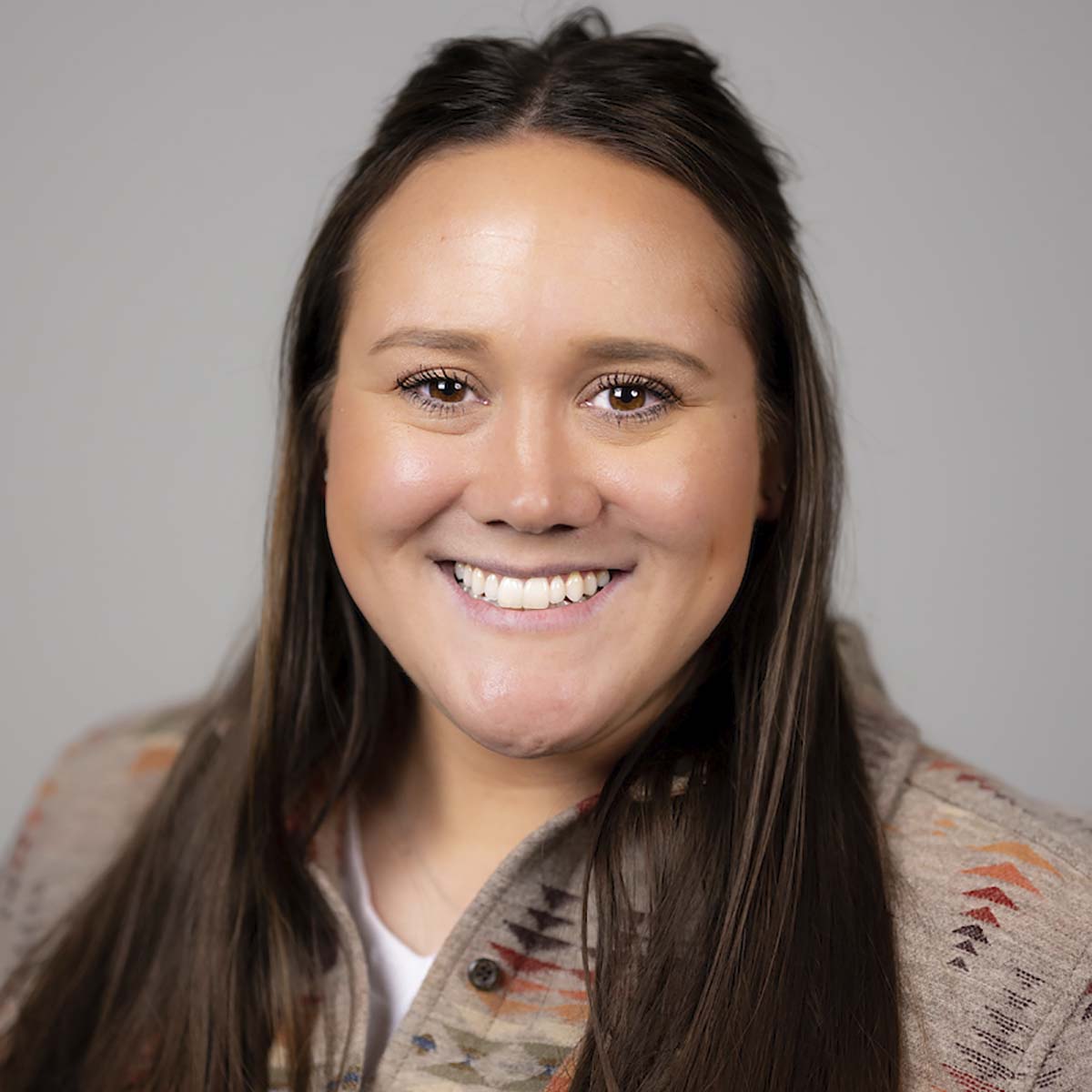

Events
- July 26— Forest Insects & Disease Field Day, Orofino
- Aug. 6 & 20 — Ag Talk Tuesday, online
- Aug. 8 — Parma R&E Center Field Day, Parma
- Aug. 13 — Idaho Home Garden Tips Class, Online
- Aug. 14 — Dementia Friends Information Session, Twin Falls
- Aug. 15 — Fermentation Basics, online
View calendar for upcoming field days (submit your field days)







